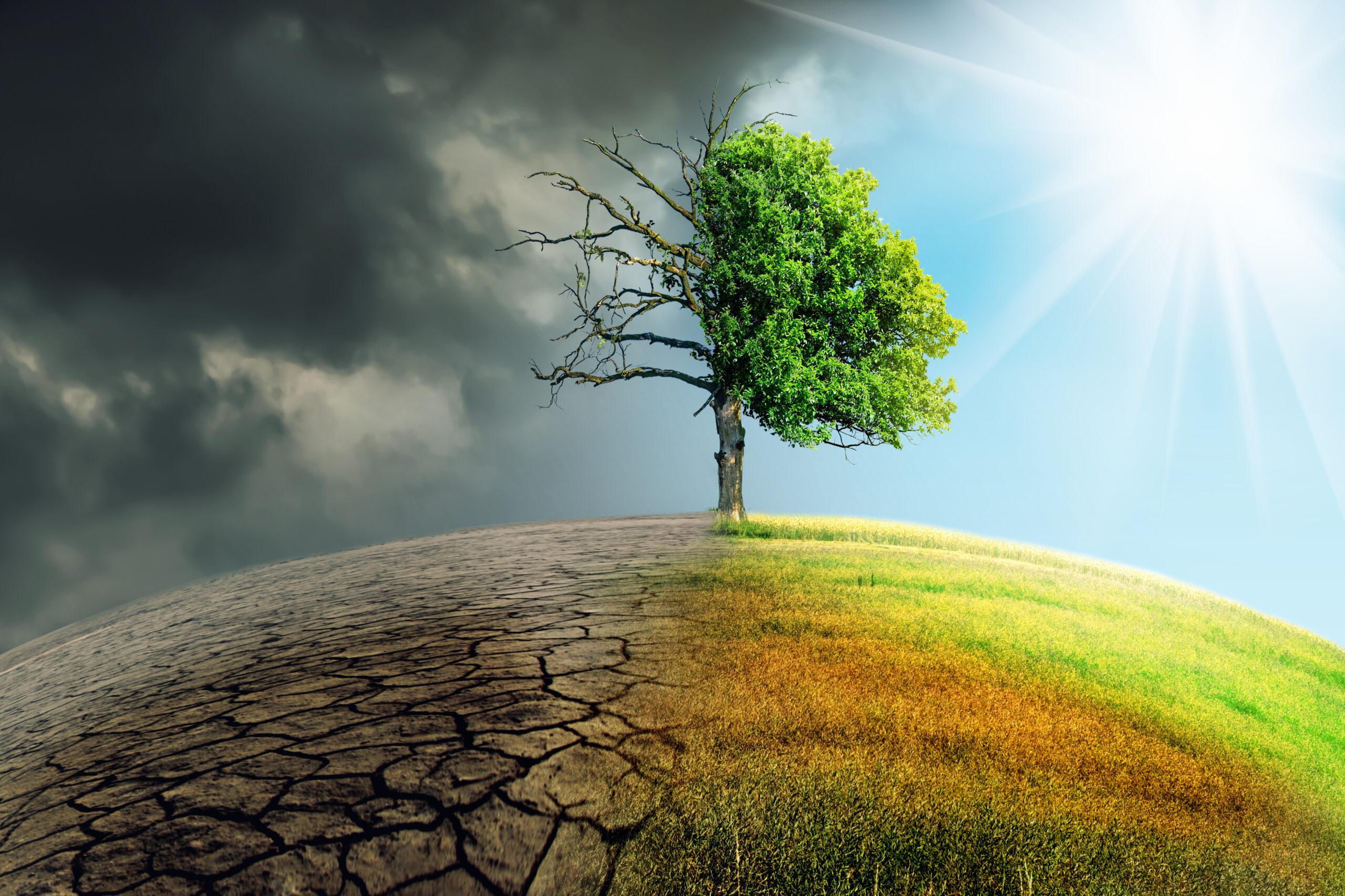In recent months, we’ve seen how climate change is hurting our food supply, with events like big floods in Southeast Asia damaging rice fields and long droughts in Africa leaving farms dry. These are not just random events but part of a bigger problem that threatens our food security. This blog will examine how climate change affects food production and distribution in 2024. We’ll discuss the problems faced by different regions, how supply chains are being disrupted, and the new ways people are trying to adapt. Our goal is to help you understand how our food systems are coping with the challenges of a changing climate.
Overview of Climate Change in 2024
In 2024, climate change continues to have a significant impact on our planet, as shown by recent reports and statistics. The data reveals that temperatures are steadily rising, leading to more frequent and severe weather events such as storms, floods, and heatwaves. Seasons are shifting, which affects when and how plants grow and animals migrate. These changes are harming ecosystems by reducing biodiversity, as many species struggle to survive in their changing habitats. Natural resources like water and soil are also being affected, making it harder for plants and animals to thrive. Overall, the current climate trends paint a worrying picture of the future of our environment.
“The Global Report on Food Crises (GRFC) 2024 confirms the enormity of the challenge of achieving the goal of ending hunger by 2030. In 2023, nearly 282 million people or 21.5 percent of the analysed population in 59 countries/territories faced high levels of acute food insecurity requiring urgent food and livelihood assistance. This additional 24 million people since 2022 is explained by expanded analysis coverage as well as deteriorating acute food insecurity in some countries outweighing improvements in others.”
Food Production Challenges
- Crop Yields: Changing weather patterns are reducing crop growth and yields.
- Water Scarcity: Droughts and water shortages are impacting irrigation and reducing water availability for crops.
- Soil Degradation: Erosion, salinization, and nutrient depletion are making soil less fertile.
- Pests and Diseases: Warmer temperatures are increasing the prevalence of pests and diseases that damage crops.
Regional Impacts
Africa
Prolonged droughts and desertification are reducing water availability and turning fertile land into desert, making it hard to grow enough food.
Asia
Unpredictable flooding and changing monsoon patterns are damaging rice fields and making rice production inconsistent.
North America
Frequent wildfires and heatwaves are destroying farmland and harming crops, making agriculture difficult.
Europe
Shifting seasons are affecting planting and harvesting times, making some crops less viable in traditional growing regions.
South America
Deforestation and changing rainfall patterns are disrupting agriculture, making it harder to predict the best times to plant and harvest.
Food Distribution Issues
1. Infrastructure Damage
Extreme weather events like storms, floods, and hurricanes can cause significant damage to the infrastructure that supports Food Distribution. Roads can be washed out, making it impossible for trucks to transport food. Ports, which are crucial for importing and exporting food, can be severely damaged by high winds and waves. Storage facilities, including warehouses and silos, can also be destroyed or compromised, leading to loss of stored food and making it difficult to keep food fresh and safe for consumption.
2. Supply Chain Disruptions
Unpredictable weather can disrupt the entire supply chain, from farms to grocery stores. For example, heavy snowstorms can delay or stop the movement of trucks, while floods can block roads and railways. These disruptions can cause delays in getting food to markets, leading to shortages and higher prices. The logistics of transporting food become more complicated and costly, as companies have to find alternative routes or wait for conditions to improve.
3. Economic Impacts
The rising costs of food production and distribution due to climate change are having significant economic impacts. Farmers face higher expenses for irrigation, pest control, and crop protection as they adapt to changing weather patterns. Transporting food also becomes more expensive when infrastructure is damaged and routes are disrupted. These increased costs are often passed on to consumers, leading to higher food prices and making it harder for people to afford the food they need.
4. Geopolitical Tensions
Climate-induced food scarcity can lead to conflicts between countries and within regions. When food becomes scarce, competition for resources can increase, causing tensions and even violence. Countries that rely on imports for their food supply may face difficulties if their trading partners are also struggling with food production. This can lead to political instability and exacerbate existing conflicts, as nations and communities fight over dwindling food supplies.
5. Social Impacts
Disruptions in food supply chains due to climate change have far-reaching social impact that extend across different regions and sectors. When food supplies are interrupted, many people lose their jobs in agriculture, transport, and retail sectors, leading to a significant loss of income. This economic strain can push vulnerable populations further into poverty, exacerbating existing social inequalities. For example, farmers who cannot harvest their crops or transport them to markets may face severe financial hardship, while workers in food processing plants and distribution networks could see their livelihoods threatened. The ripple effect of these job losses can reduce household incomes, affecting the ability of families to afford basic necessities, including nutritious food. As these social impacts cascade, they can lead to increased poverty and social unrest, especially in regions already struggling with economic instability.
6. Health impacts
The disruptions in food supply chains have profound health impacts, particularly concerning nutrient availability and diet quality. When food is scarce or too expensive, people often turn to cheaper, less nutritious alternatives, leading to a decline in diet quality. This can result in higher rates of malnutrition, micronutrient deficiencies, and related health problems, such as anaemia and weakened immune systems. In addition, the lack of diverse and sufficient food can exacerbate chronic conditions like diabetes and heart disease, which are linked to poor diet. These health impacts are not confined to one area; they affect people across the globe, particularly those in low-income communities who are less able to afford a varied diet.
Adaptation and Mitigation Strategies
- Technological Innovations
- Development of drought-resistant crops and advanced irrigation systems to reduce water usage.
- Use of precision farming techniques and satellite technology to improve crop monitoring and yield predictions.
- Investment in renewable energy sources for farming operations to reduce carbon emissions.
- Sustainable Practices
- Adoption of organic farming and permaculture techniques to enhance soil health and biodiversity.
- Implementation of efficient water management systems, such as rainwater harvesting and drip irrigation.
- Promotion of agroforestry and cover cropping to prevent soil erosion and improve soil fertility.
- Policy Measures
- Introduction of subsidies and financial support for farmers transitioning to sustainable practices and renewable energy.
- Development of climate-resilient infrastructure, including improved storage facilities and climate-proof roads and ports.
- Creation of policies that incentivise the reduction of greenhouse gas emissions and support climate adaptation projects.
- Global Cooperation
- Strengthening international agreements and partnerships to share technology, knowledge, and resources.
- Supporting global initiatives and funding for climate research and sustainable agriculture projects.
- Encouraging cross-border collaboration to address food security challenges and reduce the global carbon footprint.
Read More: The Importance of Selecting the Right Food Distributors in Warrington for Your Business
Conclusion:
In conclusion, this blog has explored the profound impact of climate change on food production and distribution in 2024, highlighting the challenges posed by extreme weather, water scarcity, soil degradation, and supply chain disruptions. We have seen how regions around the world, from Africa’s drought-stricken landscapes to Asia’s flood-prone rice fields, are grappling with these issues, making it increasingly difficult to ensure food security. As we look to the future, all of us need to support sustainable practices and advocate for policies that promote resilience and reduce carbon footprints. By working together, sharing knowledge, and investing in innovative solutions, we can build a more sustainable and secure food system for generations to come. Let us take action now to protect our planet and ensure that everyone has access to the food they need.






